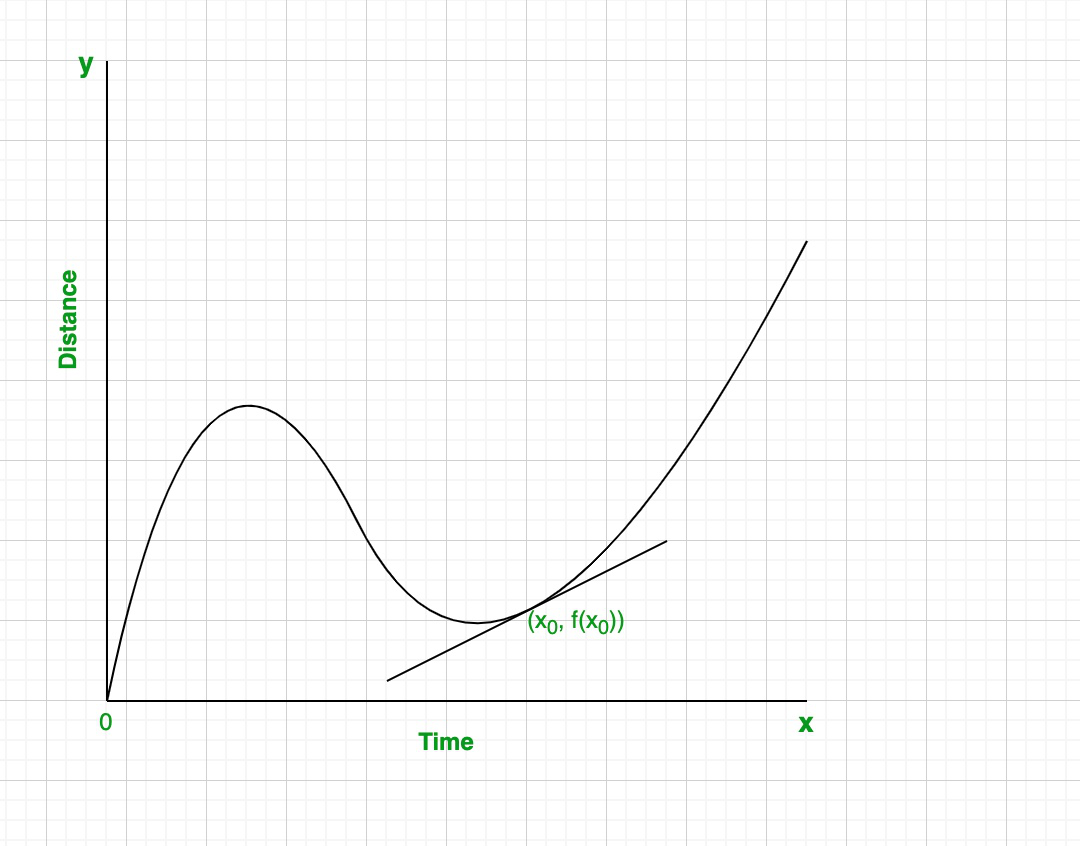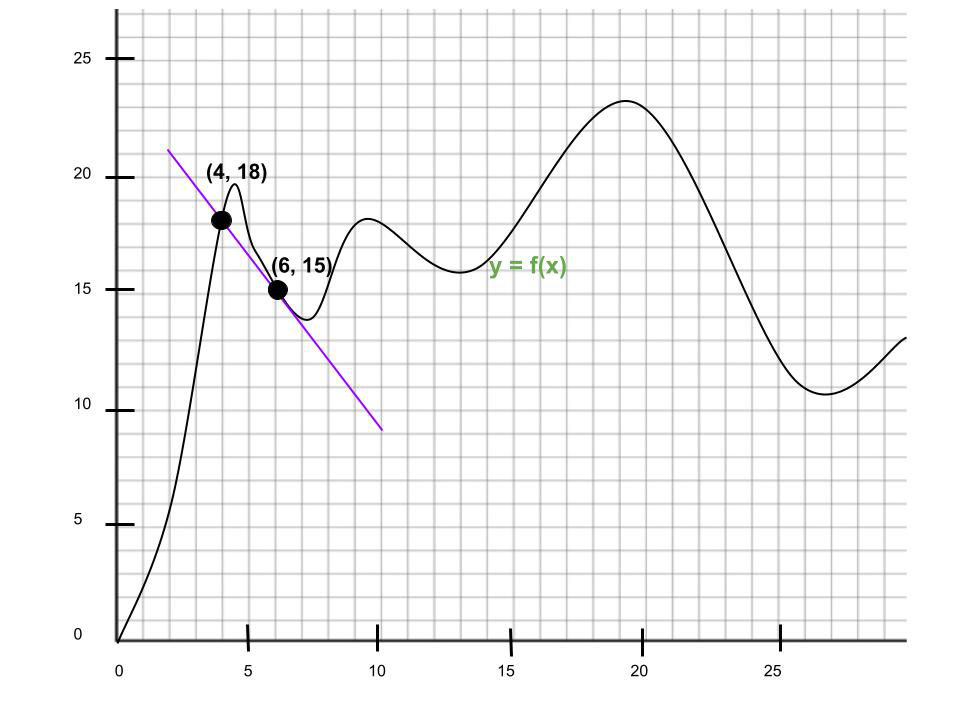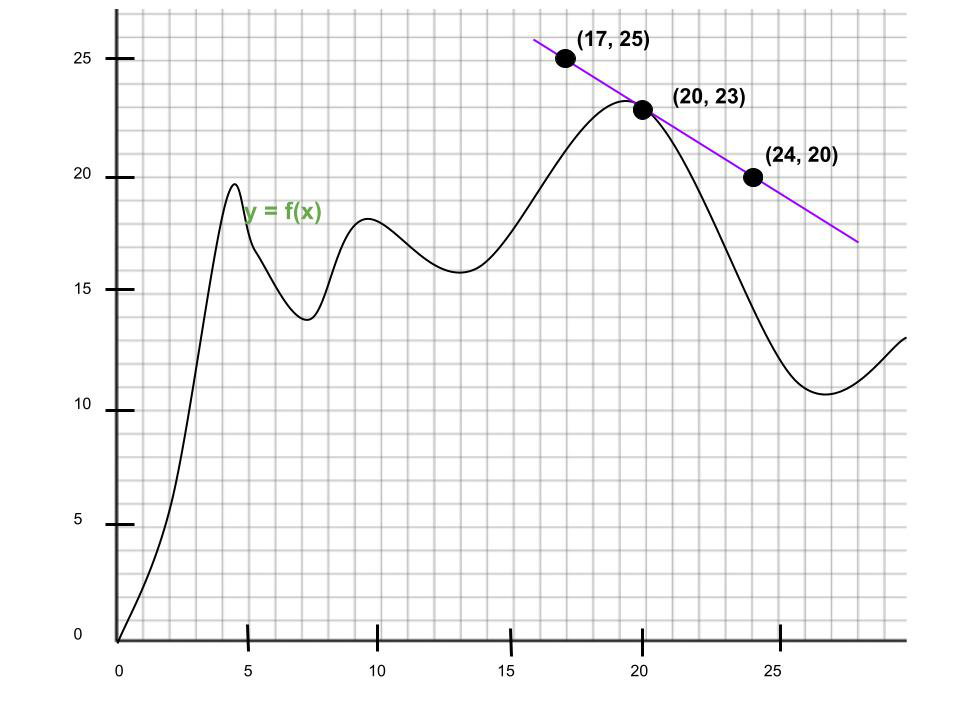how to find instantaneous rate of change from a graph
The average charge per unit of modify represents the full modify in i variable in relation to the total change of another variable. Instantaneous rate of change, or derivative, measures the specific charge per unit of change of one variable in relation to a specific, infinitesimally small-scale alter in the other variable. The average rate of change of a function can be determined with secant lines and the instantaneous rate of change tin exist determined with tangent lines. As you will learn, these rates can besides exist determined using a special type of math called calculus.
What is the rate of change?
Rate of change is the change in one variable in relation to the change in some other variable. A common charge per unit of modify is speed, which measures the modify in distance travelled in relation to the time elapsed. Olympic Gilt Medalist, Usain Bolt, became the globe's fastest human running at a top speed of 44.72 km/hr during the 100-meter dash. On boilerplate, his speed was a bit slower (nonetheless, very impressive) at 37.58 km/hr. Bolt'south top speed is an case of an instantaneous rate of alter, and his average speed is an boilerplate rate of change.
Average Rate of Change
Secant lines are establish by connecting ii points on a bend. The slope of the secant line between two points represents the average rate of alter in that interval.
Formula:
Average Rate of Alter = Slope(k) = △y/△x =
=

How to find the boilerplate charge per unit of change between two points using a secant line:
Step i: Draw a secant line connecting the ii points.

Step 2: Use the coordinates of the ii points to calculate the gradient.
Equation of slope:
Slope =
The average change of the office over the given time interval[x0, x1]
Gradient =
The gradient of the secant line represents the average
charge per unit of change of the graph in that interval.
Once you've calculated the slope of the secant line, you use the slope can write an equation to represent it.
For Instance:
Equation of slope:
y – y0 = thou(x – x0)one thousand = gradient of secant line = 4/7
ten0 = 2
y0 = 9

Hence, the equation of the secant line betwixt x = 2 and x = ix is
y – 9 =
Derivatives (Instantaneous Charge per unit of Modify)
The tangent line at a point is found by drawing a direct line that touches a bend at that point without crossing over the curve. In other words, the line should locally bear on only 1 signal. The slope of the tangent line at a point represents the instantaneous rate of change, or derivative, at that point.
Formula:
Instantaneous Rate of Modify =

How to find the derivative at a point using a tangent line:
Stride 1: Draw a tangent line at the point.

Stride 2: Utilize the coordinates of any two points on that line to calculate the slope.
Equation of slope:
Gradient =
The average change of the function over the given time interval x0
Slope =
The slope of the tangent line at a point represents
the instantaneous charge per unit of alter, or derivative, at that point.
Once you lot've calculated the slope of the tangent line, you lot can write an equation to represent it.
For Instance: Equation of slope:
y – y0 = m(x – x0)m = gradient of tangent line =

100 = xvi
y0 = 6

Hence, the equation of the tangent line at ten = 16 is
y – 16 = \frac{5}{6}(x – six)
Derivative Notation
In the early 18th century, there was controversy betwixt the smashing mathematicians Isaac Newton and Gottfried Wilhelm Leibniz over who the beginning invent calculus. This argument became known as Prioritätsstreit, or "priority dispute" in High german. The disagreement has had lasting affect on the mathematical earth, leaving u.s. with two standard derivative notations. Lagrange note is some other common derivative note, established by French mathematician and philosopher, Joseph-Louis Lagrange.
If we have the role y = f(10), So
1. Leibniz note:
"First derivative of y with respect to x"
⇒
"Second derivative of y with respect to x"
⇒
"Starting time derivative of y with respect to x
at x = 2″
⇒
2. Newton notation:
The number of dots above the part
variable represents how many times the
function has been differentiated.
"Commencement derivative of y"
⇒
"2d derivative of y"
⇒
"First derivative of y at x = 2"
⇒
3. Lagrange notation:
The number of apostrophes after the function
variable represents how many times the
office has been differentiated.
"First derivative of y"
⇒y'
"Outset derivative of y at ten = ii"
⇒y'(2)
"Second derivative of y"
⇒y"
iv. Euler's note
"First derivative"
⇒ Dxf
"2d derivative"
⇒ Dten 2f
Hither, D represents the differential operator
Sample Problems
Question ane. Notice the boilerplate rate of alter over the interval x = four, ten = 6.

Solution:
Point ane: (4, xviii)
Betoken 2: (6, 15)
Slope =

=

=

Hence, the average rate of change =

Question two. Write the equation of the tangent line at 10 = 16.

Solution:
Point of intersection: (16, eighteen)
Gradient =

=

Equation of tangent line:
Question 3. What is the derivative of the graph at x = xx? Limited your answer in Leibniz annotation.

Solution:
Given point of intersection: (20, 23)
Gradient of tangent line =

=

So, the Leibniz notation:

Question 4. Notice the derivative of the graph at 10 = four. Express your answer in Newton'due south notation.

Solution:
Given point of intersection: (four, eighteen)
Slope of tangent line =
=

So, the Newton'southward note

Question v. Observe the boilerplate rate of modify over the interval x = four, x = 25. How does this compare to the derivative at x = iv?

Solution:
Slope of secant line =

=

The boilerplate rate of change over 10 = 4, ten = 25 is -6/21,
which is less than the derivative of y at x = 4, which we establish to
be 7/three.
Question 6. Observe the instantaneous rate of change of the given function f(x) = 2x2 + eighteen at x = ix ?
Solution:
Given: f(10) = 2x2 + eighteen
f'(ten) = 4x + 0
f'(ten) = 4x
Now nosotros have to discover the instantaneous rate of change at x = 9
f(ix) = 4x
f(9) = 4(9)
f(9) = 36
Question 7. Discover the instantaneous rate of change of the given role f(x) = 4xii + 12x + 8 at ten = 4 ?
Solution:
Given: f(ten) = 4x2 + 12x + eight
f'(ten) = 8x + 12
Now we take to find the instantaneous rate of change at ten = 4
f(4) = 8x + 12
f(four) = 8(4) + 12
f(4) = 44
Source: https://www.geeksforgeeks.org/average-and-instantaneous-rate-of-change/
Posted by: kelsohishadinin.blogspot.com


0 Response to "how to find instantaneous rate of change from a graph"
Post a Comment